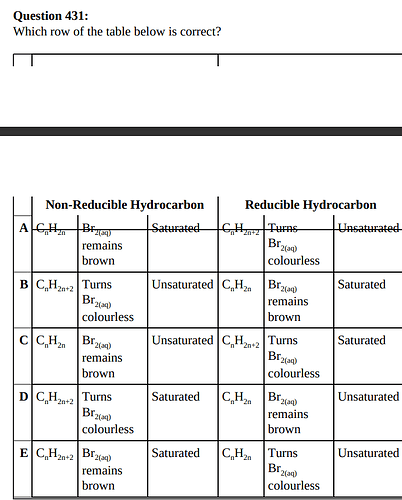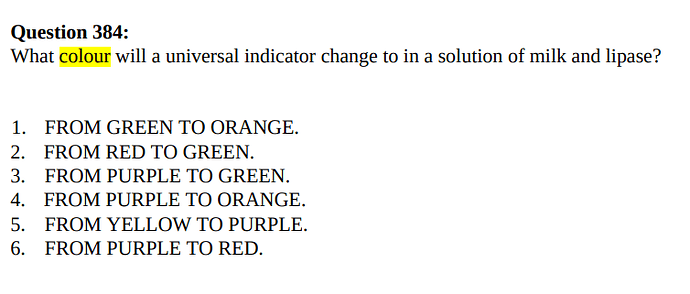im now practicing some chemistry questions from the bmat and i saw for a few times already that they ask about bromine water solution and what happens to its color and wanted to know if we will need to know if for the imat or is it enough to know the differenses between the hydro carbons and their general formulas ?
Hey! Can you add a screenshot of one of these BMAT questions?
Seems like it’s not for the IMAT exam, unless they will change something with the format, for now it’s not important to learn.
What is important to learn is the change of color due to replacement reactions.
Attaching here a summary:
A replacement reaction, also known as a displacement or substitution reaction, is a chemical reaction where an element replaces another element in a compound. This can lead to a change in color in a solution because of the formation of new chemical species which have different optical properties compared to the original substances.
For instance, let’s consider a simple reaction between copper sulfate (CuSO4), a blue compound, and iron (Fe). Iron can displace copper from copper sulfate, leading to the formation of iron sulfate (FeSO4), which is a pale green compound, and copper (Cu), which is reddish-brown.
CuSO4 (blue) + Fe (silver) → FeSO4 (pale green) + Cu (reddish-brown)
Initially, a solution of copper sulfate in water would appear blue. When iron is added to the solution, it displaces the copper, forming iron sulfate and copper. The solution would then change color from blue to pale green due to the formation of iron sulfate. Additionally, reddish-brown copper metal may precipitate out of the solution.
In general, the change in color is due to the different ways that the initial and final substances interact with light. The color of a substance is determined by which wavelengths of light it absorbs and which it reflects. Different chemical species will absorb and reflect light differently due to differences in their electronic structures. Therefore, when a chemical reaction forms new substances, the color of the solution can change.
In other cases, a color change can be observed if the reaction produces a colored precipitate, a solid that forms in a solution as a result of a chemical reaction. The color of the precipitate will depend on its chemical composition.
Lastly, it’s worth noting that not all replacement reactions will result in a visible color change. Whether or not a color change occurs will depend on the specific substances involved in the reaction.
i memorized the general what replaces what but is there a rule of tumb about color changing in substation reaction or its just to kinda know most of the colors a certain element can be ?

